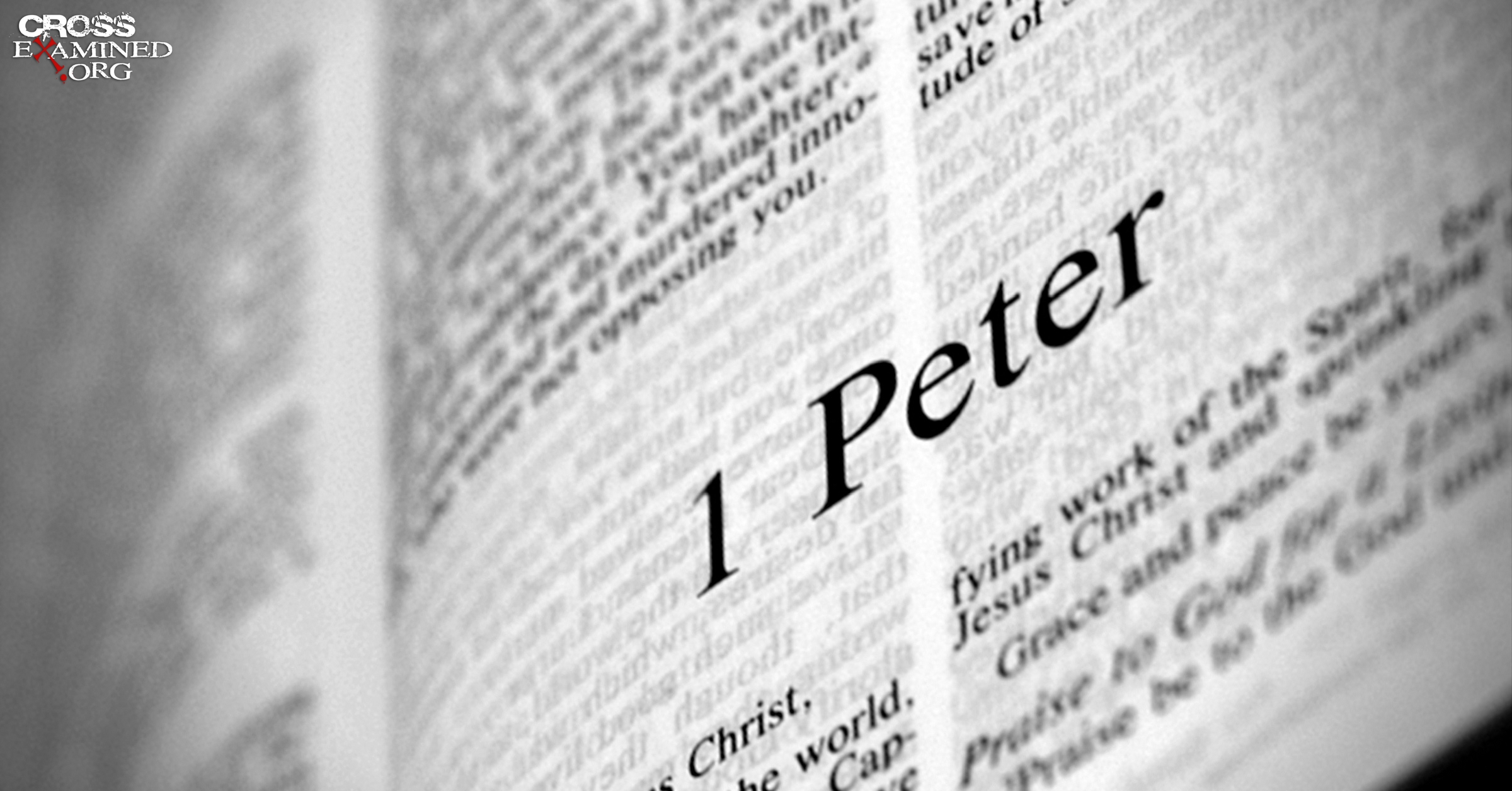By Brian Chilton
Over the past few months, we have been investigating the authors and backgrounds of the New Testament books. In this article, we will look into the letters attributed to Peter. Towards the back of the New Testament, one will find two letters associated with Peter, most would think this would be the same Simon Peter as found in the Gospel narratives. But, what do we know about the author and background behind these two letters?

Author: The author of 1 Peter is identified as “Peter, an apostle of Jesus Christ” (1 Pet. 1:1). 2 Peter is also associated with “Simeon Peter, a servant and an apostle of Jesus Christ” (2 Pet. 1:1). Thus, Simon Peter is the clear candidate for authorship of the two letters bearing his name. Silvanus was employed as an amanuensis for the first letter (1 Pet. 5:12). The second letter does not mention an amanuensis as far as I can tell. It could have been that an unnamed amanuensis was employed, but it is odd that no name is given especially with the church’s disdain for pseudonymous letters.[1] The Semitic spelling of Simeon in 2 Peter 1:1 suggests that Peter himself penned the letter. In addition, while 2 Peter had some skeptics, the vast majority of the early church accepted 2 Peter as a genuine writing from Simon Peter. 1 Peter was unanimously accepted as being the words of the imprisoned Simon Peter. Irenaeus, Tertullian, and Clement of Alexandria all accepted the letters’ authenticity.
Date: If 1 Peter was written by Simon Peter, then it must have been penned somewhere between AD 62 and 64. Paul was imprisoned around AD 60 to 62 and he never mentioned Peter. Likewise, Peter never mentions Paul being in Rome with him. Only Silvanus and Mark were with Peter (1 Pet. 5:12-13). This suggests that 1 Peter was after AD 62 when Paul was imprisoned and released for a time, but at a time before 2 Peter. So, when was 2 Peter written?
2 Peter, like 1 Peter, was likely written from a Roman prison cell. The author of 2 Peter know that he is about to soon die as he writes “since I know that I will soon lay aside my tent, as our Lord Jesus Christ has indeed made clear to me” (2 Pet. 1:14).[2] Tradition indicates that Peter died sometime around AD 67 during Nero’s reign (AD 54-68). 2 Peter was written after 1 Peter which forces the dating of 1 Peter to a time between AD 62-67. I think it can be said that 1 Peter was written around AD 65 with 2 Peter coming about in AD 67.
Purpose: 1 Peter was addressed to “those chosen, living as exiles dispersed abroad in Pontus, Galatia, Cappadocia, Asia, and Bithynia, chosen according to the foreknowledge of God the Father” (1 Pet. 1:1-2a). Peter writes about the living hope that the children of God have while living in the last days. Throughout the text, Peter provides ethical standards for the child of God. This theme on ethical living is continued in 2 Peter (2 Pet. 1:3-11; 3:11-18) but with the emphasis of focusing on the true teaching of Christ (2 Pet. 1:12-21; 3:1-10) and the rejection of false heresies that attempt to infiltrate the church (see especially 2 Pet. 2:1-22).
2 Peter’s Association with Jude: 2 Peter and Jude are quite similar. Some scholars suggest that one author borrowed from the other. If the author of 2 Peter borrowed from Jude, then Peter was probably not the author since Jude was written somewhere between AD 65-80.[3] However, if Jude borrowed from Peter, then Peter is more likely the author. It is far more likely that Jude borrowed from Peter than vice versa. Since Peter was an influential leader and Jude, even if he was the brother of Jesus, was not a disciple until after the resurrection of Jesus.
The letters of Peter are quite powerful and important for modern Christians. Believers are reminded of the call to moral living in Peter’s letters. In addition, we are reminded of the importance of truth. It is in 1 Peter 3:15 that we are given what has become the mantra for apologetics. Peter teaches that the believer must “regard Christ the Lord as holy, ready at any time to give a defense to anyone who asks you for a reason for the hope that is in you. Yet do this with gentleness and respect, keeping a clear conscience, so that when you are accused, those who disparage your good conduct in Christ will be put to shame” (1 Pet. 3:15-16).
Notes
[1] Tertullian flatly rejected a pseudonymous letter related to Paul and Thecla. See also Eusebius, Church History, 6.12.3.
[2] Unless otherwise noted, all quoted Scripture comes from the Christian Standard Bible(Nashville: Holman, 2017).
[3] Later datings of Jude would certainly eliminate Peter from contention as he died in AD 67 by the command of Nero.
About the Author
Brian Chilton is the founder of BellatorChristi.com and is the host of The Bellator Christi Podcast. He received his Master of Divinity in Theology from Liberty University (with high distinction); his Bachelor of Science in Religious Studies and Philosophy from Gardner-Webb University (with honors); and received certification in Christian Apologetics from Biola University. Brian is in the Ph.D. program in Theology and Apologetics at Liberty University. Brian is full member of the International Society of Christian Apologetics and the Christian Apologetics Alliance. Brian has been in the ministry for over 14 years and serves as the pastor of Huntsville Baptist Church in Yadkinville, North Carolina.
Original Blog Source: http://bit.ly/2gcThEy


















Facebook Comments